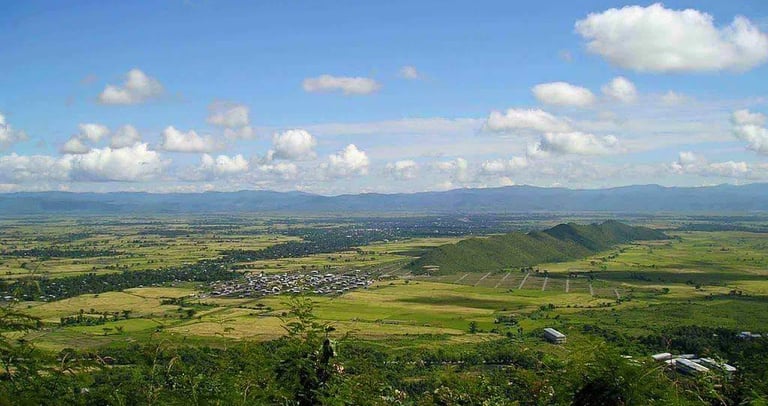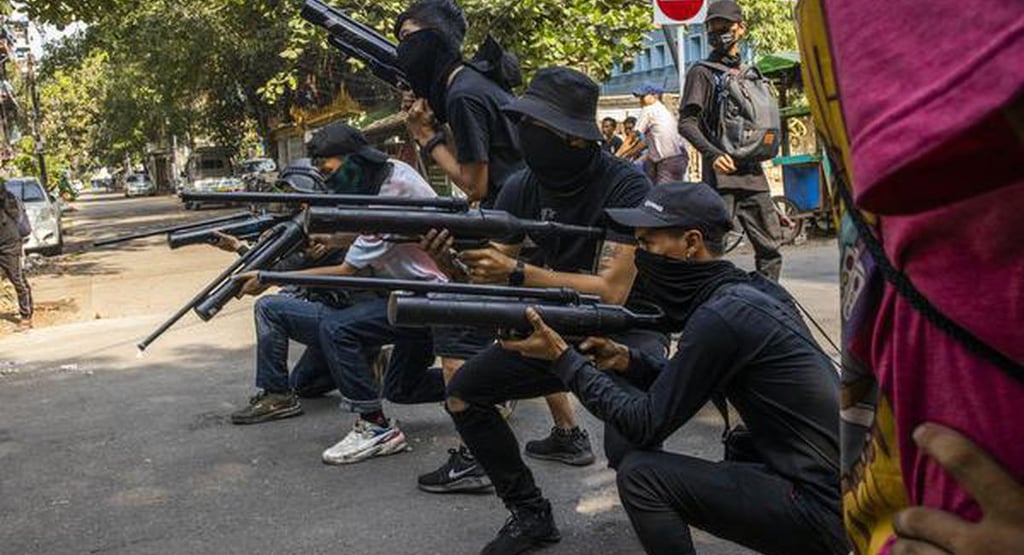India-Myanmar Relations: A Tale of Two Controversies
OPINION & ANALYSIS
Imphal/Aizawl: Two distinct recent developments could possibly strained India-Myanmar relations, drawing sharp rebukes from Naypyidaw and highlighting the complex interplay of diplomacy, history, and geopolitics.


Kabaw Valley
The signing of a pact by pro-democracy forces in Mizoram and the Manipur Rajya Sabha MP’s parliamentary plea to reclaim the Kabaw Valley are separate issues, yet their timing has amplified tensions, testing the fragile ties between the two neighbors.

The first controversy stems from a pact signed on February 27, 2025, in Mizoram, reportedly between pro-democracy armed groups opposing Myanmar’s junta. Though specifics are unclear, this agreement suggests Mizoram’s increasing involvement with anti-junta rebels across the border, potentially positioning it as a hub for transnational militancy.


Anti- Junta Forces signing a pact of alliance in Mizoram in the presence of Mizoram CM
Myanmar’s military government has reacted with alarm, viewing the pact as a breach of sovereignty and a sign of India’s tacit support for insurgents.


FILE - In this April 3, 2021, file photo, anti-coup protesters line in formation with homemade air rifles during a demonstration against the military coup in Yangon, Myanmar. (Courtesy: The Hindu)
Given Myanmar’s ongoing instability since the 2021 coup, compounded by ethnic conflicts and insurgency along its 1,643-kilometer border with India, such perceptions fuel its distrust of external influence.
In contrast, the second issue is a historical grievance reignited by Rajya Sabha MP from Manipur, Leishemba Sanajaoba. During a recent parliamentary session, the MP urged India to reclaim the Kabaw Valley, a fertile region ceded to Myanmar under British colonial rule in the 19th century. For many in Manipur, the valley—once part of its kingdom—represents a lost heritage, and its return is seen as a matter of justice and identity. Myanmar’s junta, however, condemned the plea as a provocative threat to its territorial integrity, a stance hardened by its domestic struggles against rebellion and civil unrest.
Though unrelated, these events have converged to create a diplomatic challenge. The Mizoram pact, likely a localized initiative, risks being misinterpreted as India’s endorsement of anti-Myanmar militancy. Meanwhile, the Kabaw Valley plea, though not official policy, stirs nationalist sentiments at a time when both nations need stability, not confrontation.
Myanmar’s fierce responses reveal its broader anxiety about India’s regional influence, while New Delhi faces the task of managing these flare-ups without alienating a key neighbor.
India’s government has responded with restraint, emphasizing dialogue and respect for Myanmar’s sovereignty while distancing itself from the MP’s call. This reflects a broader tension: regional voices in India’s Northeast often diverge from national priorities, complicating foreign policy. Myanmar, too, must avoid overreacting—construing the pact as hostility could deepen its isolation or drive it closer to powers like China, a looming presence in the region.
At this crossroads, India and Myanmar must disentangle these issues. The Mizoram pact should be addressed as a border security matter, not a bilateral rupture, while the Kabaw Valley rhetoric, however heartfelt, belongs to history—not present-day geopolitics.
How both nations navigate these controversies will shape not only their relationship but also the stability of a region where past and present perpetually collide.
